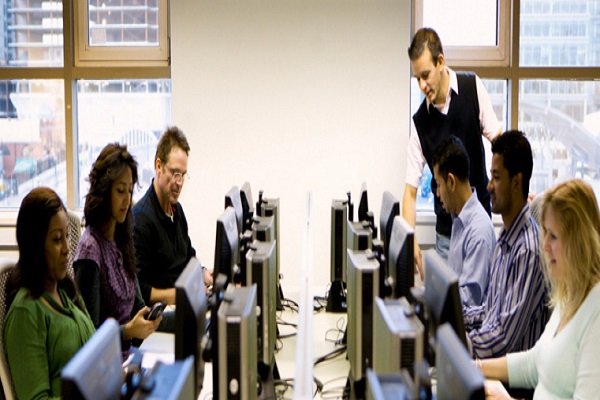In employee training, a continuous rain of information bursts into the employees. If this only consists of a presentation and a lecture, the motivation can quickly suffer. A certain form of e-learning can be used here. The approach of game-based learning also called gamification. Through this, the motivation of the employees can be increased and contributed to the internalization of the learned. Just as you will use the game based learning gimmicks in your next training, you will find here.
Game-based Learning – What is it?
However, the e-learning method Game based learning also shows that learning and play are by no means mutually exclusive. Typical elements from computer games are transferred into non-game-related contexts. This is also the case, for example, in employee training. Game-typical elements can represent a reward system, different missions, or level-baseness. In particular, through the response of emotions in the sense of video game tradition, game-based learning helps to address the user in the long term. The goal of the Gamification is the motivation increase of the users, with which a higher absorption capacity. Newly learned knowledge can be better internalized and maintained. Through Gamification can be so effectively worked against the theory of the psychologist Hermann Ebbinghaus,
Game based learning makes working life more exciting
The usability of game-based learning in professional life can be traced back to the many parallels between work and play. Tasks, rules, goals, information – all this is available in both types. However, they are usually assessed differently. While we are looking forward to exciting tasks in a game, they are often perceived as boring in professional life. In order to change this, Game-based Learning offers a bridge between work and play. For example, you could create a customized quiz software for your company – increased traffic on your website and a stronger customer loyalty are guaranteed here. Various areas of the work life can be addressed by Gamification – via teambuilding, Product training, and employee retention up to employee training. However, in all cases, always in moderation, so that the fun does not become a sort.
Gamification seems to be a useful instrument, particularly in the case of employee training. New is directly applied to game simulations and is thus better internalized. While 20% to 30% of the content can be maintained in the case of training courses based on traditional concepts, according to Accenture consultant Mooseburger, 90% of the lessons learned are remembered with the e-learning approach of Gamification.
What is to be considered in the case of employee training?
A wonderful approach that you want to use the next training, product training or other areas of your company? Good idea! However, it is important to keep in mind, because the game is not the same fun. This is also the case with the e-learning approach game based learning. The following things must be considered:
1. Performance
Good performance includes transparency, clear objectives, and feedback in real-time.
Transparency – Performance assessments should be clearly defined and visible by all employees. In this way, every employee knows where he stands. In the framework of gamification, this can be represented in the form of ranking lists.
Clear Goals – Each game needs a goal. Be it the existence of several levels, quests or against the classic final boss, which for example once again kidnapped a princess. It is important that there should be long-term goals. Small goals that make continuous progress possible keep the motivation and enthusiasm alive.
Feedback – In companies, there is usually the annual employee discussion. However, this is often. expected with a tremor or resignation rather than with the expectation of improvement. Game-based learning can counter this phenomenon with feedback in real-time. A player’s action is immediate. In this way, good behavior and action can be reinforced by immediate positive reactions and mistakes can be ironed out immediately.
2. Achievement
Achievement includes rewards and advancement opportunities. These two factors, in particular, contribute to the motivation of the users. The reward systems of video games are used in game-based learning. Trophies, new items, and level upgrades.
3. Social Interaction
Gamification promotes social interactions in a company by encouraging the team spirit as well as providing an incentive for competition.
Teamwork facilitates good results, contributes to a sense of togetherness and improves the climate. In addition, different skills are used productively in order to achieve goals – this is also an important aspect in the working world.
A certain spirit of competition among the employees cannot hurt either. This creates incentives and stimulates ambition.







